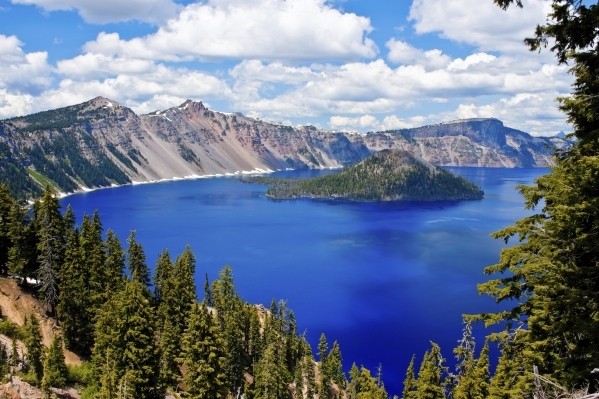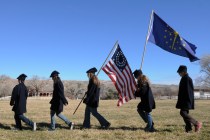Oregon’s Crater Lake a unique natural wonder
A sparkling sapphire among the scenic jewels of the National Park Service, Crater Lake is unlike any other natural wonder in the country.
Located high in the Cascade Range in southwestern Oregon, Crater Lake was created when a volcanic peak collapsed nearly 8,000 years ago. After the top of 10,000-to-12,000-foot Mount Mazama disappeared, rainwater and snowmelt began to fill the steep-sided crater left behind.
The lake lies 2,000 feet below the crater's rim. Extraordinarily pure, the water in the lake is a gorgeous deep blue. At 1,943 feet, Crater Lake is the country's deepest lake. Continuing volcanic activity created hat-shaped Wizard Island, a much-photographed feature in the lake.
A network of scenic roads in Oregon accessing Crater Lake National Park delivers nearly half a million visitors annually. Travelers reach the lake from Klamath Falls in about an hour's drive using U.S. Highway 97 and state Route 62. The park is 80 miles from Medford on Interstate 5 by way of state routes 140 and 62. Some travelers prefer to fly to a major city and rent a car for the road trip to the park. Oregon provides bountiful scenery no matter which way you approach the park. Expect to pay a park entrance fee of $15.
Winter deposits an average of about 45 feet of snow in the park, creating fantastic winter landscapes. It is a season welcomed by cross-country skiers and snowshoers. Although the park remains open all year, many of Crater Lake's facilities and roads are closed more than half of the year.
The season when everything is open spans brief weeks in summer, since snows often linger well into July. Warm-season visitors have until early October to enjoy full access and services at Crater Lake National Park. Reservations for lodgings or campgrounds inside the park are advised. Signs of approaching autumn appear early, with the first winter snows right behind the brilliantly colored foliage along approach routes to Crater Lake Lodge and Mazama Cabins, both campgrounds, one of the park's two visitor centers, the eastern half of the popular Rim Drive, other access roads and some high trails. They will not reopen until next May or later.
For visitors who like to hike, July, August and September offer the widest range of activities. Several easy-to-moderate hikes are located near facilities at the rim, many of them accessible for disabled visitors. Experienced hikers find challenges on the steep trail to the water's edge or trails to nearby viewpoints and promontories. For those fit enough for the trail down to the lake and back up to the rim, scenic boat rides of two or four hours are offered several times a day, weather permitting. Book early, as the ranger-narrated trips are so popular that they often sell out.
Not surprisingly, some of the best views of Crater Lake are from facilities near park headquarters at Rim Village. The easily accessible paved promenade in front of the cafe and gift shop draws crowds close to the rim. The many windows on the second floor of the gift shop offer splendid panoramas. The 33-mile Rim Drive provides stunning scenery and picture-postcard views at every curve. Allow two or three hours for this driving adventure's many points of interest and scenic pullouts.
Visitors on a few days during upcoming weeks may enter the park free of charge. Fee-free days include the National Park Service's birthday on Aug. 25, National Public Lands Day on Sept. 26 and Veterans Day on Nov. 11. Additionally, hikers and bikers participating in special events on Sept. 19 and 26 will not be charged for entrance. Sign up online soon. On those days, 24 miles of the road from North Junction to park headquarters will be closed to vehicular traffic and Lost Creek Campground will be closed. All other park roads will remain open.
— Margo Bartlett Pesek's Trip of the Week column appears on Sundays.






















